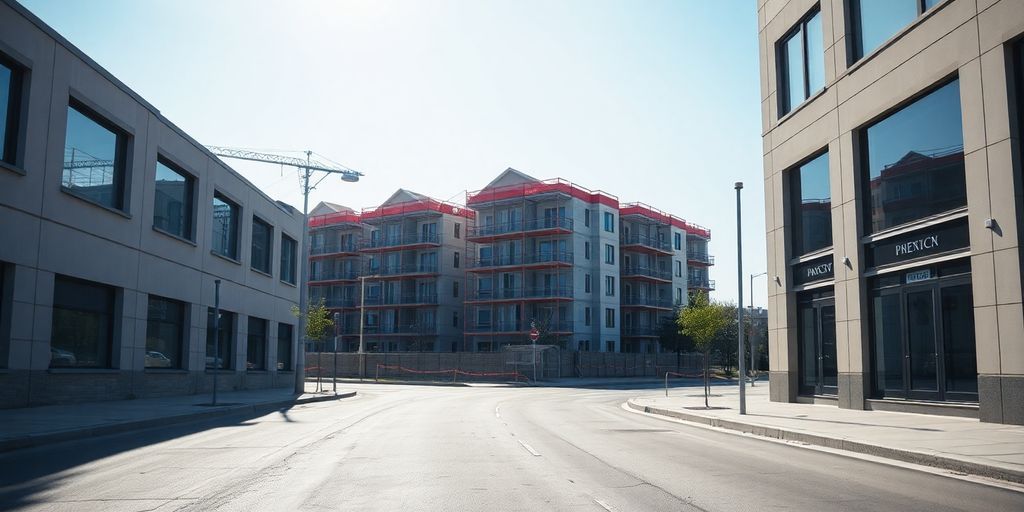Recruiting Top Real Estate Agents Strategies for Success
Blog Author - Published Date
This is a subtitle for your new post
Recruiting top real estate agents can feel like a daunting task, but it’s essential for building a successful brokerage. You want to create a strong team that not only drives revenue but also enhances client satisfaction. This article will cover practical strategies for attracting the best talent, handling common objections, and ensuring that your agents stay with you for the long haul. Let’s jump into how to recruit real estate agents effectively!
Key Takeaways
- Recruiting top agents boosts your brokerage's overall performance.
- A clear and engaging elevator pitch can make a big difference in attracting agents.
- Networking events provide excellent opportunities for making connections with potential recruits.
- Addressing common objections with empathy can help build trust with prospective agents.
- Creating a supportive environment is crucial for retaining agents long-term.
Why You Should Recruit Real Estate Agents
Recruiting real estate agents isn't just about filling empty desks; it's about strategically building a team that drives your brokerage forward. Effective recruitment focuses on building strong relationships and creating a supportive environment. It's about setting the stage for long-term success.
Building a Powerhouse Team
A strong team of agents elevates your brokerage's reputation and market presence. It's not just about numbers; it's about the quality and synergy of the individuals working together. A well-rounded team can handle a wider range of clients and properties, making your brokerage a one-stop shop for real estate needs. This collaborative environment can also foster innovation and shared learning, benefiting everyone involved.
Boosting Company Revenue
Onboarding top-performing agents directly impacts your bottom line. More transactions mean more commission for the brokerage. But it's not just about the individual sales; successful agents attract other successful agents, creating a positive feedback loop. Think of it as an investment that pays dividends over time. Plus, a larger team allows you to take on bigger projects and expand your market reach. It's a win-win situation for everyone involved. Consider the potential for high earnings when you have a team of motivated agents.
Enhancing Client Satisfaction
Recruiting agents with high potential means expanding your client base and improving the overall client experience. More agents mean more availability and personalized service for clients. A diverse team can also cater to a wider range of client needs and preferences. Happy clients are more likely to refer your brokerage to others, further fueling growth. It's all about creating a positive and seamless experience for everyone involved.
Recruiting is the single most valuable skillset in real estate and the linchpin of all successful real estate businesses. To exponentially and sustainably increase the net profit of your real estate business, you need a committed and systematic recruitment practice.
Strategies for Recruiting Real Estate Agents
Let's explore some effective methods for attracting both experienced and new agents to your team. It's not just about filling spots; it's about building a team that drives brokerage growth.
Creating a Compelling Elevator Pitch
Before you reach out to potential agents, nail down your elevator pitch. This pitch should clearly answer the question: "Why should I join your brokerage?" Keep it concise, around 30-60 seconds, and let your personality shine. Highlight how agents can thrive with your support. Tailor it to address the specific needs of agents at different stages of their careers. For example, new agents might be interested in mentorship programs, while experienced agents might be looking for better agent incentives.
Networking Events for Recruitment
Networking events are gold mines for meeting potential recruits. Both seasoned and up-and-coming agents attend these events, providing a relaxed setting to connect. Consider hosting your own meet-and-greets featuring successful agents from your brokerage. Follow up with promising contacts after the event to build relationships.
Utilizing Social Media for Attraction
In today's digital age, social media is a powerful tool for attracting talent. Showcase your brokerage's culture, successes, and support for agents. Share success stories, highlight training programs, and engage with the community. A strong online presence can make agents want to reach out to you, rather than the other way around.
Building a strong brand is key. Agents want to work for brokerages they know, like, and trust. Consistently showcasing your team's achievements and supportive environment on social media can significantly boost your recruiting efforts.
Here's a simple breakdown of content ideas:
- Agent Spotlights: Highlight individual successes.
- Behind-the-Scenes: Show a day in the life at your brokerage.
- Community Involvement: Share your contributions to local causes.
- Market Updates: Provide valuable insights and analysis.
Handling Common Objections in Recruitment
Recruiting real estate agents isn't always a walk in the park. You're bound to run into some objections. It's all about how you handle them. Being prepared and understanding where the agents are coming from can make a huge difference. Let's look at some common objections and how to address them.
Addressing Time Constraints
"I'm too busy to switch brokerages right now!" Sound familiar? This is a big one. Agents are swamped, and the thought of moving everything over can be daunting. Acknowledge their busyness, then highlight how your brokerage can actually save them time in the long run. Talk about your support staff, tech tools, or streamlined processes. Maybe offer to help with the transition – paperwork, marketing materials, etc. The goal is to show them that switching to your brokerage won't add to their workload; it'll lighten it.
Countering Loyalty to Current Brokerages
Some agents are just really loyal to their current brokerage. They've been there for years, they like the people, and they feel a sense of obligation. You can't just trash their current brokerage. Instead, focus on what you offer that they might be missing. Maybe it's better commission splits, more training opportunities, or a stronger brand presence.
It's not about saying their current brokerage is bad; it's about showing them that your brokerage is a better fit for their future goals.
Overcoming Concerns About Commission Structures
Money talks, right? Commission structures are a huge deal. If an agent is hesitant, it might be because they're worried about taking a pay cut. Be transparent about your commission structure. Explain exactly how it works and how it can benefit them. Maybe you offer higher splits for top performers, or maybe you have a tiered system that rewards growth. Also, highlight any additional income opportunities, like referral bonuses or profit sharing.
Here's a simple comparison table you could use:
Feature
Current Brokerage
Your Brokerage
Base Split
70/30
80/20
Top Performer Split
80/20
90/10
Referral Bonus
None
$500
Make sure to tailor your approach to each agent's specific concerns. Listen to what they have to say, and address their questions honestly and directly. With the right approach, you can turn objections into opportunities.
Retaining Agents for Long-Term Success
It's easy to get caught up in the hunt for new agents, but don't forget about the ones you already have! Retention strategies are just as important, if not more so, than recruitment. After all, a revolving door of agents can hurt your brokerage's reputation and bottom line. Let's look at some ways to keep your top talent happy and productive.
Creating a Supportive Work Environment
A positive and supportive work environment is key. Agents need to feel valued, respected, and heard. This means fostering open communication, encouraging teamwork, and celebrating successes. It's also about creating a culture where agents feel comfortable asking for help and sharing ideas. A good environment can be a major draw, and a great reason for agents to stay put.
Offering Professional Development Opportunities
Real estate is always changing, so agents need to keep their skills sharp. Offering professional development opportunities shows that you're invested in their growth and success. This could include:
- Training on new technologies
- Workshops on sales and marketing techniques
- Certifications in specialized areas
- Opportunities to attend industry conferences
Providing these resources not only helps agents improve their performance but also makes them feel more confident and capable. It's a win-win!
Implementing Effective Mentorship Programs
Pairing experienced agents with newer ones can be incredibly beneficial. Mentorship programs provide new agents with guidance and support, while also giving experienced agents a chance to share their knowledge and develop their leadership skills. A good mentor can help a new agent navigate the challenges of the industry and build a successful career. Plus, it creates a stronger sense of community within the brokerage.
Inbound Recruiting Techniques
Instead of chasing agents, why not have them come to you? That's the idea behind inbound recruiting. It's about creating an environment where agents want to join your team. It's like building a really cool clubhouse – everyone wants to be inside.
Building a Strong Brand Presence
Your brand is your reputation. Make sure it's a good one. Showcasing your company culture, values, and successes online can attract agents who align with your vision. Think of it as your digital handshake – make it count. A strong brand presence also helps with real estate recruiting.
Leveraging Success Stories
Nothing sells like success. Share stories of your agents achieving their goals, overcoming challenges, and thriving within your brokerage.
- Highlight specific achievements with numbers.
- Use testimonials from satisfied agents.
- Showcase how your brokerage supported their journey.
Success stories provide tangible proof of your brokerage's value proposition. They demonstrate that you're not just making promises, but actually delivering results.
Engaging with the Community
Get involved in local events, support community initiatives, and show that your brokerage cares about more than just sales. This builds goodwill and positions you as a trusted member of the community. It also helps you find agents who are already invested in the area. Don't forget to have solid onboarding processes to welcome new agents.
Incentives for Attracting Top Talent
It's a competitive market out there, and talent acquisition in real estate is no different. You need to stand out to get the best agents on your team. It's not just about the money, but a well-rounded package that speaks to what agents really want.
Referral Bonuses and Incentives
Referral programs can be a goldmine. Happy agents are your best recruiters. Offer bonuses for successful referrals. It could be cash, extra vacation time, or even covering some marketing expenses for the referring agent. Make it worth their while to bring in other great people.
Offering Unique Perks
Think outside the box. Everyone offers commission splits, but what else can you do? Consider things like:
- Professional photography for listings
- Personal assistant services
- Lead generation software subscriptions
- Coaching or training stipends
- High-end tech like new laptops or tablets
Creating a Competitive Compensation Package
Of course, money matters. Research what other brokerages in your area are offering and aim to be competitive, or even a little better. It's not always about the highest split, but a fair split combined with other benefits can be very attractive. Consider offering tiered commission structures based on performance, or even profit sharing for top producers.
A great compensation package shows agents you value their work and are invested in their success. It's a statement about your brokerage's commitment to its people.
Understanding the Needs of Modern Agents
The real estate world is changing fast, and what agents want now is different than what they wanted even a few years ago. To recruit and keep top talent, you've got to know what makes them tick. It's not just about the money anymore (though that's still important!).
Flexibility and Work-Life Balance
Modern agents really value flexibility. They want to control their schedules and have a good balance between work and personal life. This isn't just a millennial thing; everyone wants to avoid burnout.
- Offer remote work options.
- Provide flexible hours.
- Encourage time off and vacations.
A supportive environment that respects personal time can be a game-changer in attracting and retaining agents.
Technology and Tools for Success
Agents need the right tools to do their jobs well. They're looking for brokerages that invest in technology to help them be more efficient and productive. Think about it – outdated systems mean wasted time and missed opportunities. Make sure you have the latest CRM software to help them succeed.
- Cutting-edge CRM systems
- Marketing automation tools
- Mobile-friendly platforms
Diversity and Inclusion in Recruitment
Creating a diverse and inclusive workplace isn't just the right thing to do; it's also good for business. Agents want to work in an environment where everyone feels welcome and respected. A brokerage that embraces diversity attracts a wider range of talent and can better serve a diverse clientele. It's important to have DEI in recruitment.
- Actively recruit from diverse communities.
- Provide diversity and inclusion training.
- Create a culture of respect and belonging.
Wrapping It Up
In the end, recruiting top real estate agents is all about building connections and creating a welcoming environment. You want to attract agents who not only fit your brokerage's vibe but also share your goals. Remember, it’s not just about filling positions; it’s about forming a strong team that can grow together. Keep your strategies flexible and be ready to adapt as the market changes. If you focus on understanding what agents need and how you can support them, you’ll not only bring in talent but also keep them around for the long haul. So, get out there, network, and show potential recruits why your brokerage is the place to be!
Frequently Asked Questions
Why is recruiting real estate agents important?
Recruiting real estate agents helps build a strong team that can boost your company's earnings and improve client satisfaction.
What strategies can I use to recruit agents?
You can create a strong elevator pitch, attend networking events, and use social media to attract agents.
How can I handle objections from potential recruits?
Listen to their concerns, show empathy, and provide solutions to their issues, like time constraints or loyalty to their current brokerage.
What can I do to keep agents in my brokerage long-term?
Create a supportive work environment, offer chances for professional growth, and set up mentoring programs.
What are some effective incentives for attracting top talent?
Consider offering referral bonuses, unique perks, and competitive pay to make your brokerage more appealing.
What do modern agents look for in a brokerage?
Agents today want flexibility, good technology, and a workplace that values diversity and inclusion.














